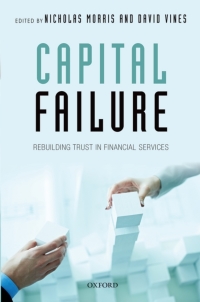Question
Shrewsbury Herbal Products (SHP), an established manufacturer of herbal teas, seasonings, and medicines, is based in central England near the Welsh border. Its merchandise is
Shrewsbury Herbal Products (SHP), an established manufacturer of herbal teas, seasonings, and medicines, is based in central England near the Welsh border. Its merchandise is distributed throughout the United Kingdom and various regions of the Asian continent.
Q.1 What is the present value of HebohTea, assuming a discount rate of 10%, given that it is anticipated to produce a series of cash flows over the next 9 years, with the initial payment of $200,000 due in 3 years and it being one of the best-selling herbal teas in Southeast Asia for SHP? Please include all calculations. I asked this question asking how to get the cashflows and I received this answer below. It has answered nothing. like for example, the cash flow for year 4 is supposedly 250,000 - how did this value come to be. And also it gave me the cash flow until year 10, the question is asking for 9 years Step 1: Calculate the cash flows for each period Since HebohTea is anticipated to produce a series of cash flows over the next 9 years, we need to calculate the cash flows for each year. Let's assume that the cash flows for HebohTea are as follows: Year 3: $200,000 (initial payment) Year 4: $250,000 Year 5: $300,000 Year 6: $350,000 Year 7: $400,000 Year 8: $450,000 Year 9: $500,000 Year 10: $550,000 Explanation: In finance, cash flow refers to the movement of cash in and out of a business or project. To evaluate the feasibility of an investment, it is necessary to estimate the cash inflows and outflows for each year of the investment's life. In this step, the goal is to calculate the cash flows for HebohTea over the next 9 years. The cash flows presented in the given scenario represent the expected cash inflows that the company will receive at the end of each year. To calculate these cash flows, the company will need to consider all sources of cash inflows and outflows for each year, such as revenues, expenses, capital expenditures, and working capital changes. In the given scenario, it appears that the cash flows are related to a specific investment or project, and they are anticipated to increase over time. The initial payment of $200,000 in Year 3 is likely related to some upfront investment or capital expenditure. The subsequent cash flows of $250,000 in Year 4, $300,000 in Year 5, and so on, are likely related to revenue generated by the investment. Once the cash flows for each period are estimated, they can be used in subsequent steps to calculate the investment's net present value (NPV) and other financial metrics. Step 1: Calculate the cash flows for each period Since HebohTea is anticipated to produce a series of cash flows over the next 9 years, we need to calculate the cash flows for each year. Let's assume that the cash flows for HebohTea are as follows: Year 3: $200,000 (initial payment) Year 4: $250,000 Year 5: $300,000 Year 6: $350,000 Year 7: $400,000 Year 8: $450,000 Year 9: $500,000 Year 10: $550,000 Explanation: In finance, cash flow refers to the movement of cash in and out of a business or project. To evaluate the feasibility of an investment, it is necessary to estimate the cash inflows and outflows for each year of the investment's life. In this step, the goal is to calculate the cash flows for HebohTea over the next 9 years. The cash flows presented in the given scenario represent the expected cash inflows that the company will receive at the end of each year. To calculate these cash flows, the company will need to consider all sources of cash inflows and outflows for each year, such as revenues, expenses, capital expenditures, and working capital changes. In the given scenario, it appears that the cash flows are related to a specific investment or project, and they are anticipated to increase over time. The initial payment of $200,000 in Year 3 is likely related to some upfront investment or capital expenditure. The subsequent cash flows of $250,000 in Year 4, $300,000 in Year 5, and so on, are likely related to revenue generated by the investment. Once the cash flows for each period are estimated, they can be used in subsequent steps to calculate the investment's net present value (NPV) and other financial metrics.
Step by Step Solution
There are 3 Steps involved in it
Step: 1

Get Instant Access to Expert-Tailored Solutions
See step-by-step solutions with expert insights and AI powered tools for academic success
Step: 2

Step: 3

Ace Your Homework with AI
Get the answers you need in no time with our AI-driven, step-by-step assistance
Get Started


